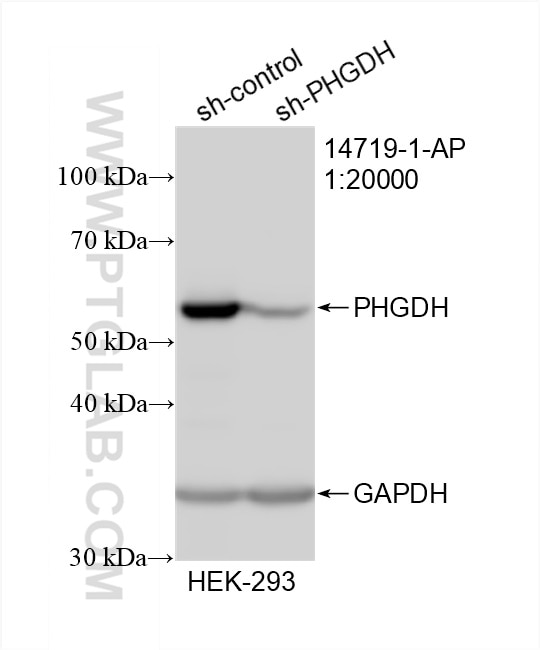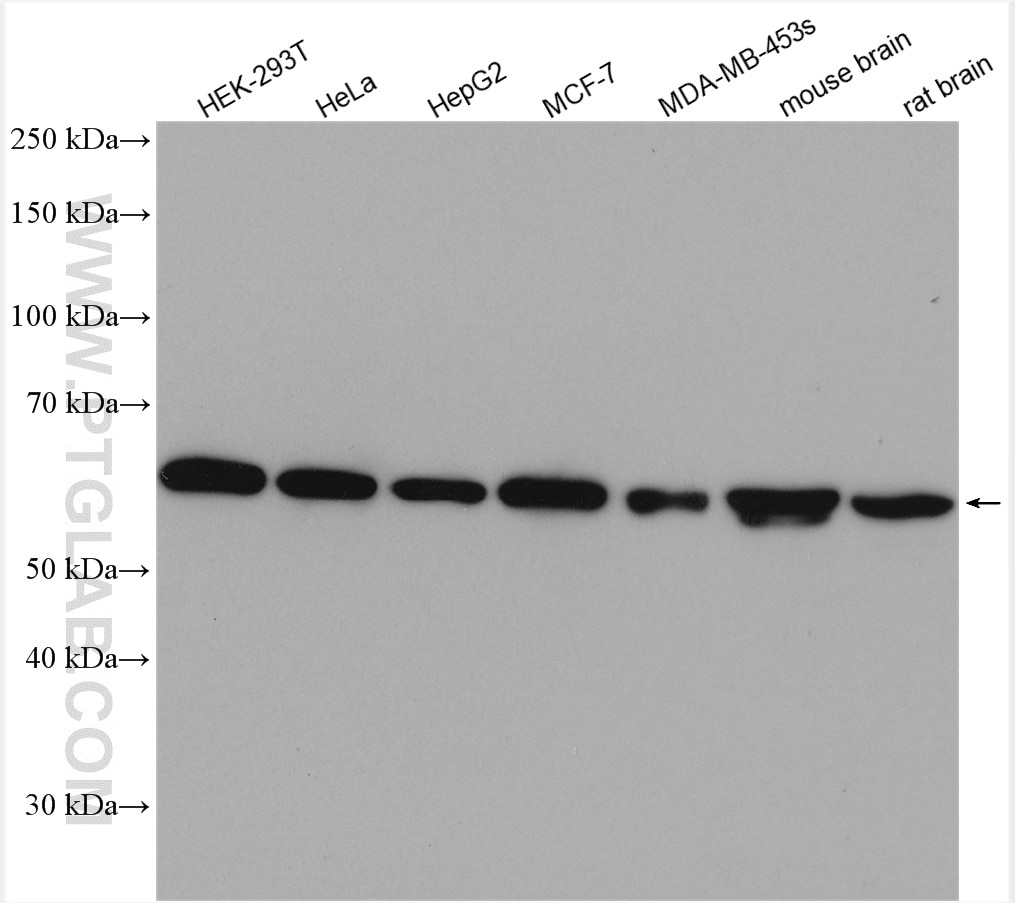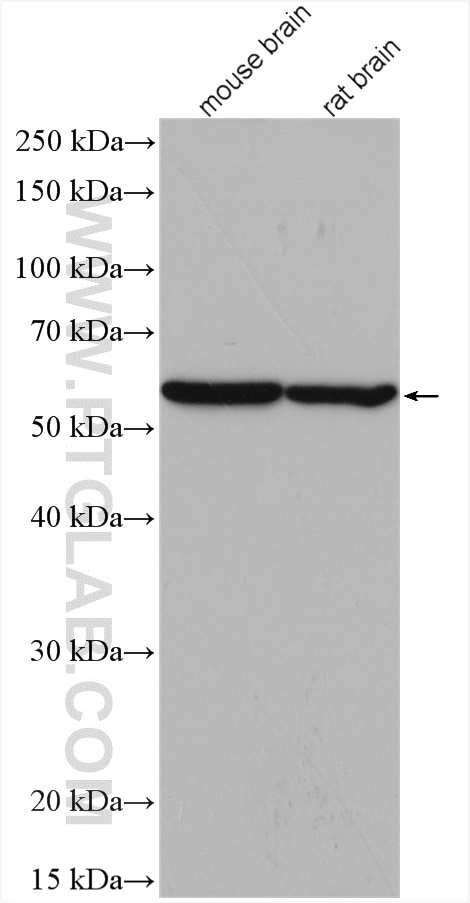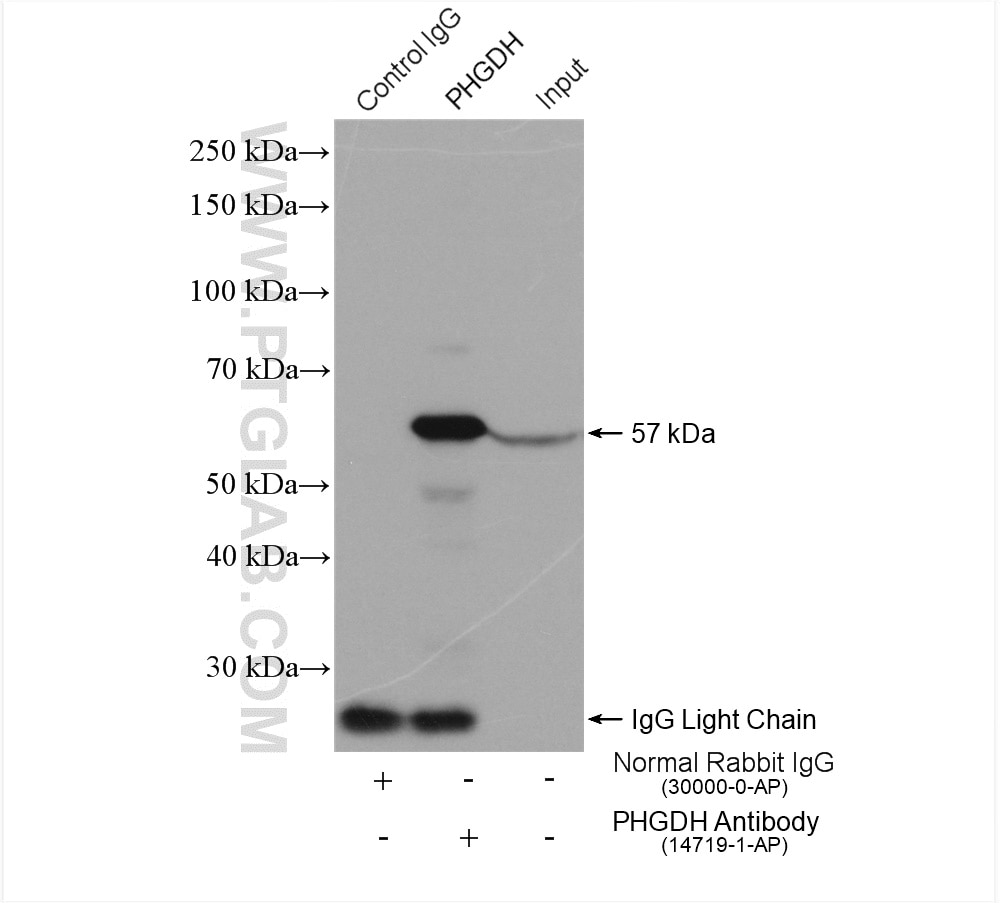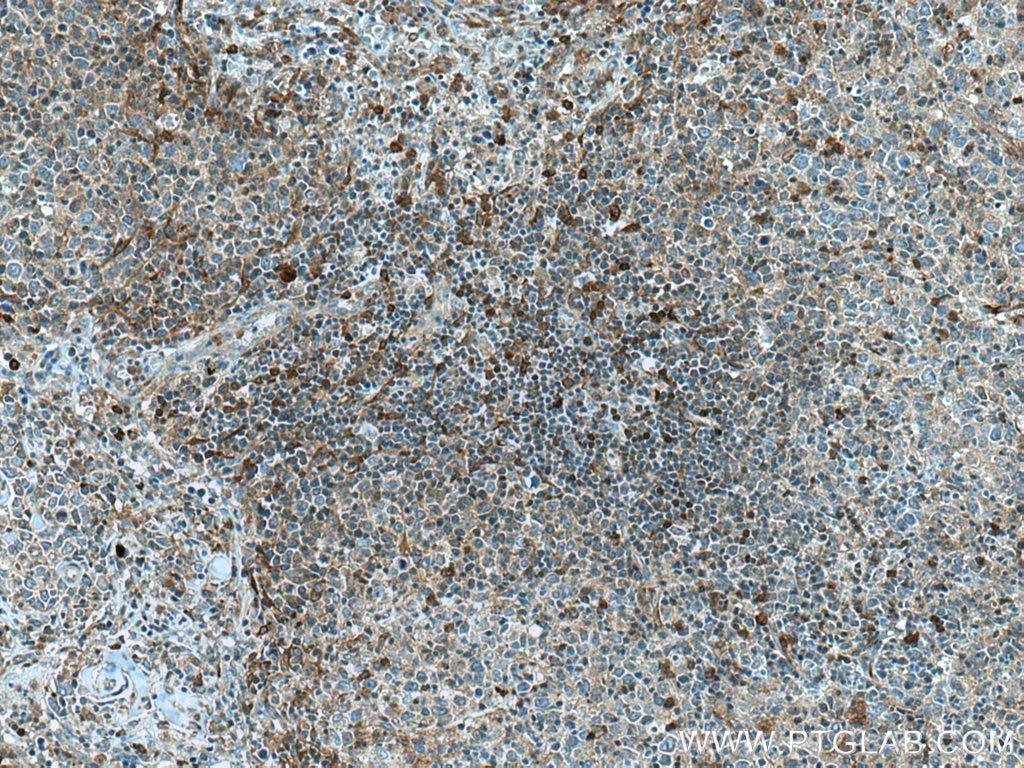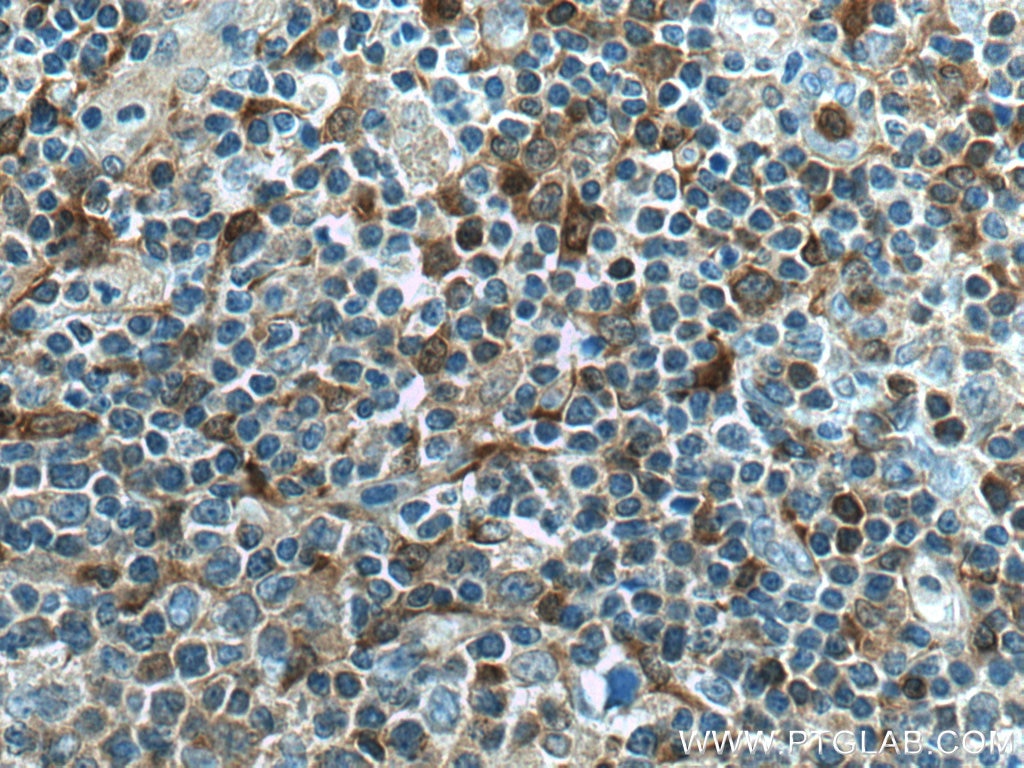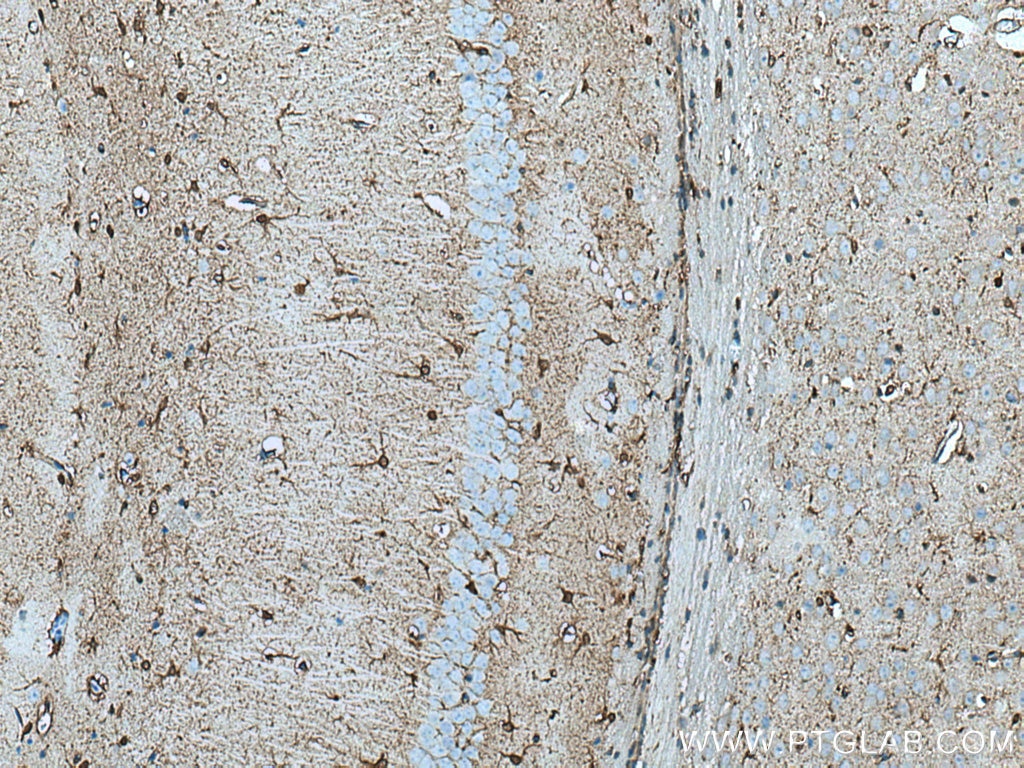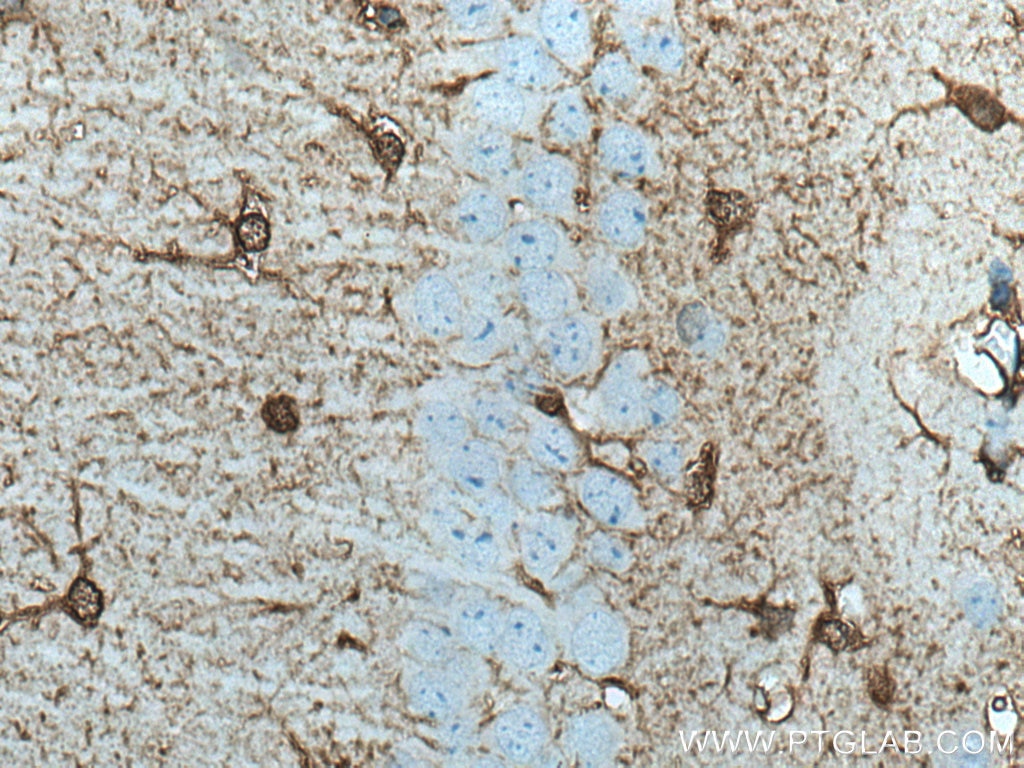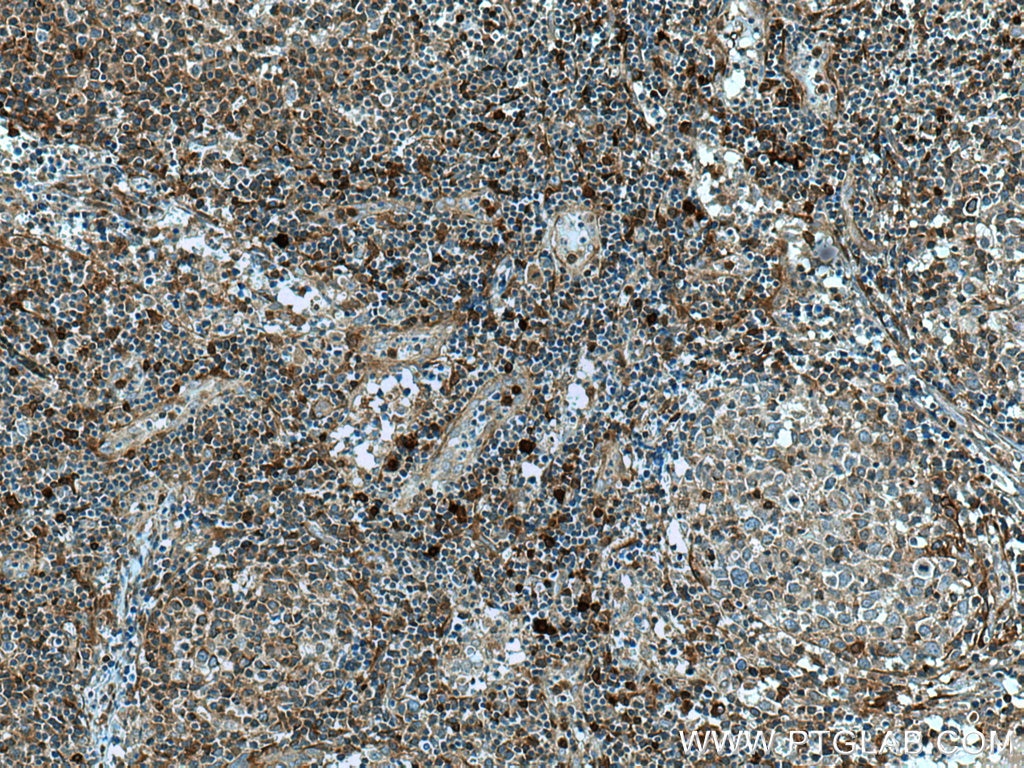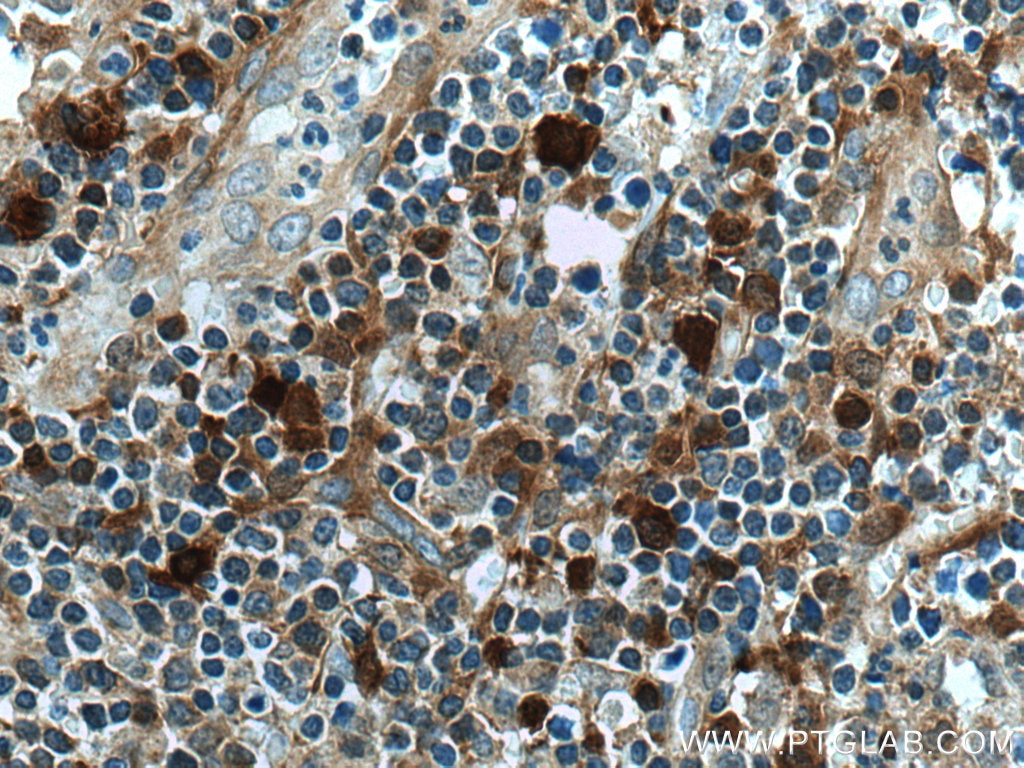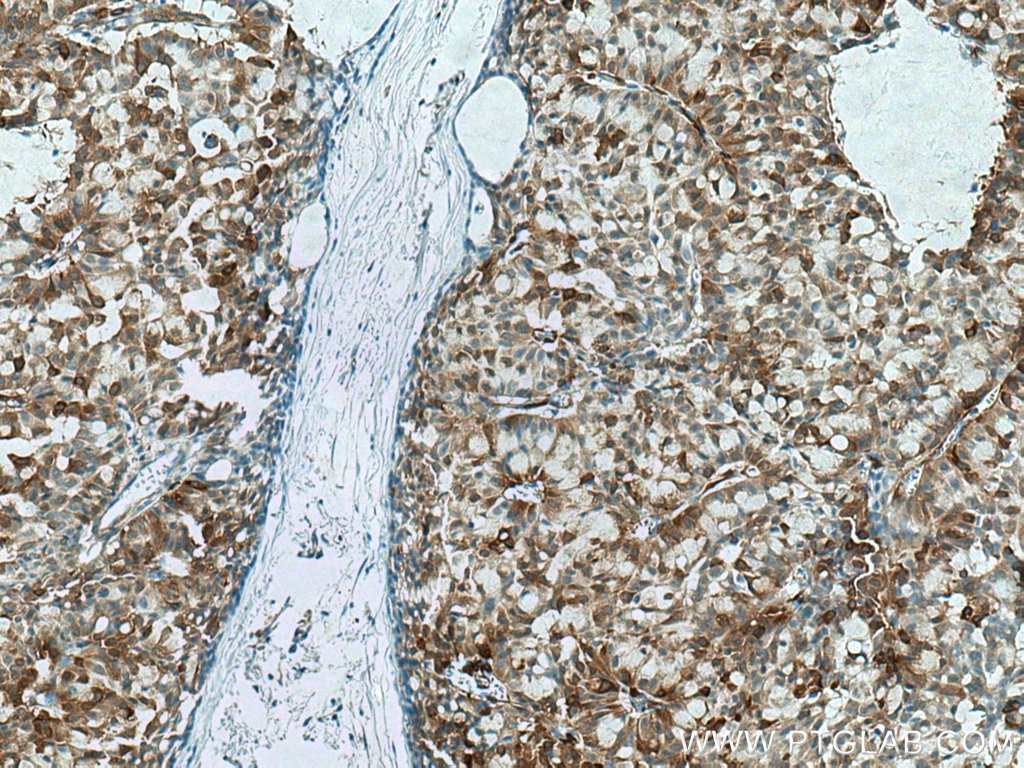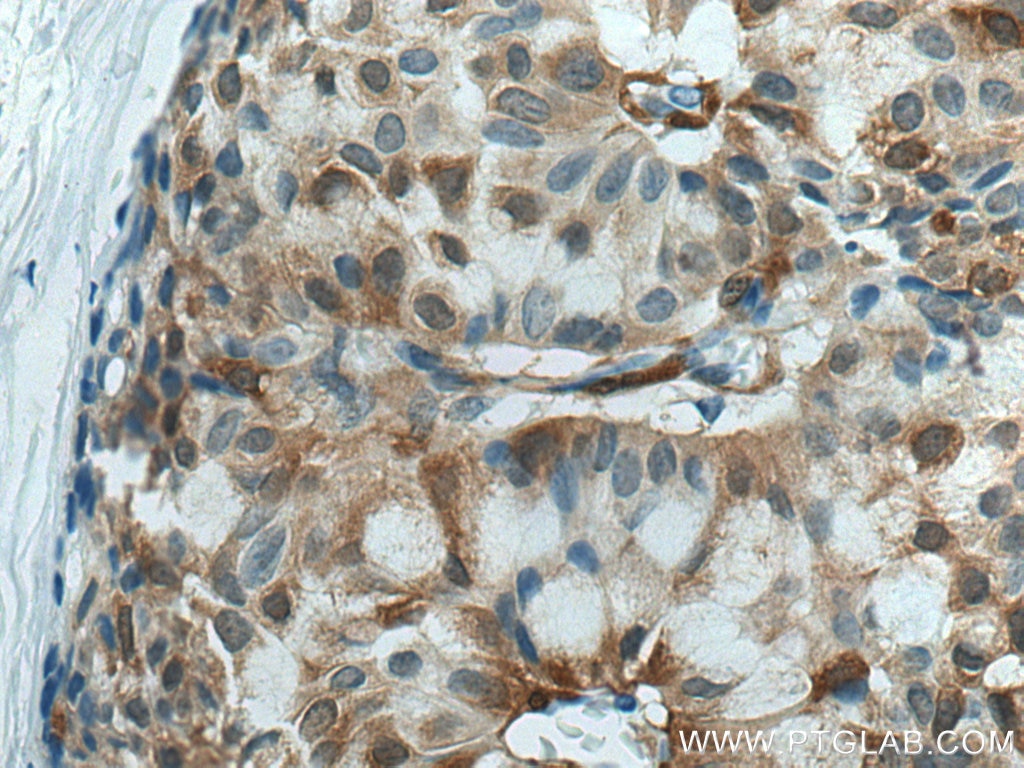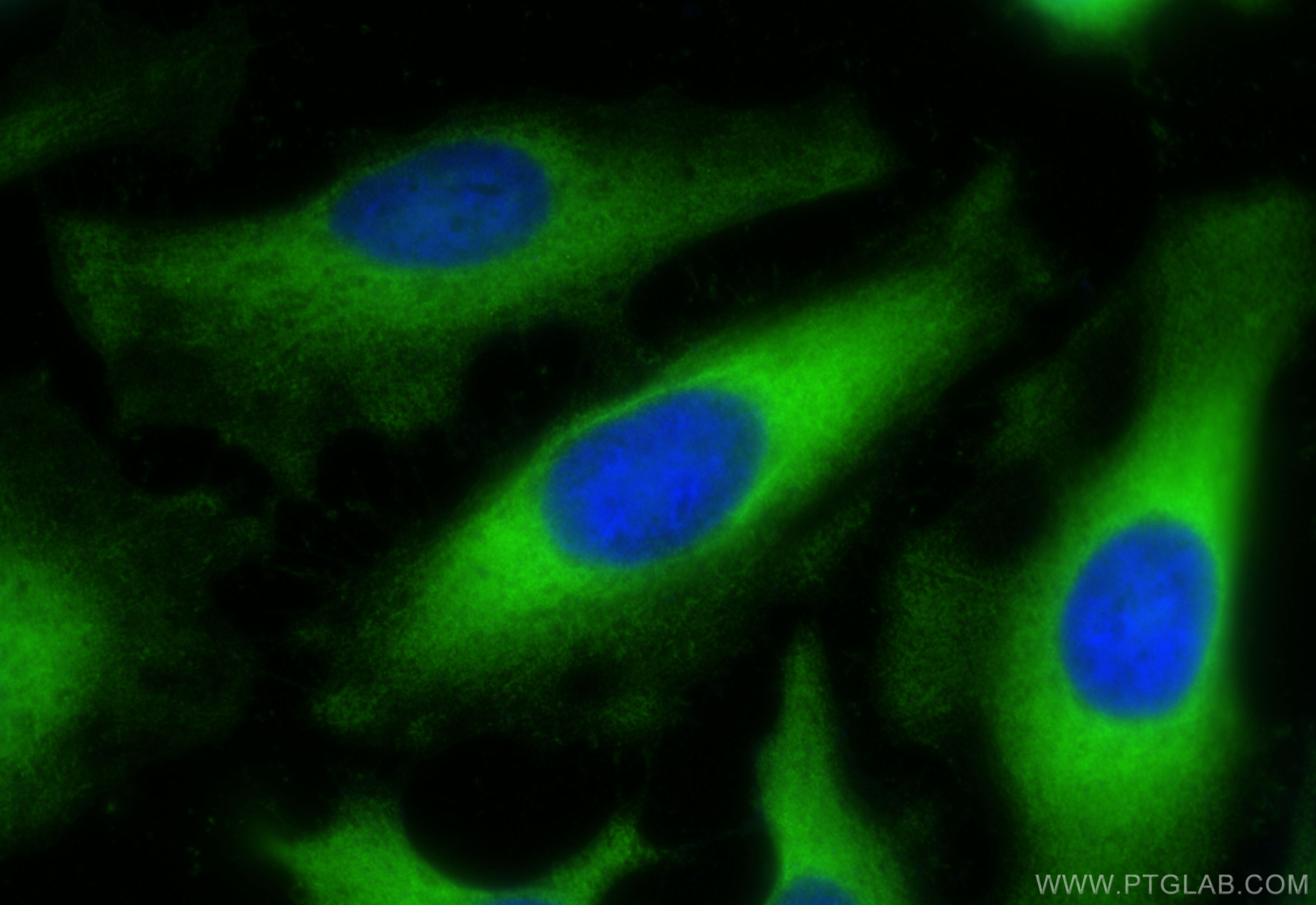Validation Data Gallery
Tested Applications
| Positive WB detected in | HEK-293T cells, HEK-293 cells, mouse brain tissue, HeLa cells, HepG2 cells, MCF-7 cells, MDA-MB-453s cells, rat brain tissue |
| Positive IP detected in | HeLa cells |
| Positive IHC detected in | human lymphoma tissue, human breast hyperplasia tissue, mouse brain tissue Note: suggested antigen retrieval with TE buffer pH 9.0; (*) Alternatively, antigen retrieval may be performed with citrate buffer pH 6.0 |
| Positive IF/ICC detected in | HeLa cells |
Recommended dilution
| Application | Dilution |
|---|---|
| Western Blot (WB) | WB : 1:1000-1:6000 |
| Immunoprecipitation (IP) | IP : 0.5-4.0 ug for 1.0-3.0 mg of total protein lysate |
| Immunohistochemistry (IHC) | IHC : 1:500-1:2000 |
| Immunofluorescence (IF)/ICC | IF/ICC : 1:200-1:800 |
| It is recommended that this reagent should be titrated in each testing system to obtain optimal results. | |
| Sample-dependent, Check data in validation data gallery. | |
Published Applications
| KD/KO | See 11 publications below |
| WB | See 48 publications below |
| IHC | See 18 publications below |
| IF | See 6 publications below |
| IP | See 1 publications below |
| CoIP | See 2 publications below |
| RIP | See 1 publications below |
Product Information
14719-1-AP targets PHGDH in WB, IHC, IF/ICC, IP, CoIP, RIP, ELISA applications and shows reactivity with human, mouse, rat samples.
| Tested Reactivity | human, mouse, rat |
| Cited Reactivity | human, mouse, rat |
| Host / Isotype | Rabbit / IgG |
| Class | Polyclonal |
| Type | Antibody |
| Immunogen | PHGDH fusion protein Ag6445 相同性解析による交差性が予測される生物種 |
| Full Name | phosphoglycerate dehydrogenase |
| Calculated molecular weight | 57 kDa |
| Observed molecular weight | 57 kDa |
| GenBank accession number | BC000303 |
| Gene Symbol | PHGDH |
| Gene ID (NCBI) | 26227 |
| RRID | AB_2283938 |
| Conjugate | Unconjugated |
| Form | Liquid |
| Purification Method | Antigen affinity purification |
| UNIPROT ID | O43175 |
| Storage Buffer | PBS with 0.02% sodium azide and 50% glycerol , pH 7.3 |
| Storage Conditions | Store at -20°C. Stable for one year after shipment. Aliquoting is unnecessary for -20oC storage. |
Background Information
PHGDH(D-3-phosphoglycerate dehydrogenase) is also named as 3-PGDH, PGDH3 and belongs to the D-isomer specific 2-hydroxyacid dehydrogenase family. It catalyzes the transition of 3-phosphoglycerate into 3-phosphohydroxypyruvate, which is the first and rate-limiting step in the phosphorylated pathway of serine biosynthesis, using NAD+/NADH as a cofactor. 3-PGDH deficiency is a rare recessive inborn error in the biosynthesis of the amino acid L-serine characterized clinically by congenital microcephaly, psychomotor retardation, and intractable seizures(PMID:19235232 ).
Protocols
| Product Specific Protocols | |
|---|---|
| WB protocol for PHGDH antibody 14719-1-AP | Download protocol |
| IHC protocol for PHGDH antibody 14719-1-AP | Download protocol |
| IF protocol for PHGDH antibody 14719-1-AP | Download protocol |
| IP protocol for PHGDH antibody 14719-1-AP | Download protocol |
| Standard Protocols | |
|---|---|
| Click here to view our Standard Protocols |
Publications
| Species | Application | Title |
|---|---|---|
Cell Metab PHGDH expression increases with progression of Alzheimer's disease pathology and symptoms. | ||
Nat Immunol PERK is a critical metabolic hub for immunosuppressive function in macrophages. | ||
Nat Commun Phosphoglycerate dehydrogenase activates PKM2 to phosphorylate histone H3T11 and attenuate cellular senescence | ||
Mol Cell Serine synthesis sustains macrophage IL-1β production via NAD+-dependent protein acetylation | ||
Mol Cancer CircMYH9 drives colorectal cancer growth by regulating serine metabolism and redox homeostasis in a p53-dependent manner | ||
J Extracell Vesicles Extracellular vesicles derived from oesophageal cancer containing P4HB promote muscle wasting via regulating PHGDH/Bcl-2/caspase-3 pathway. |
